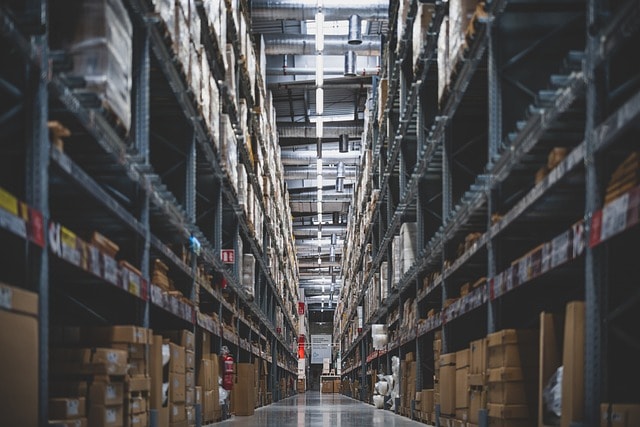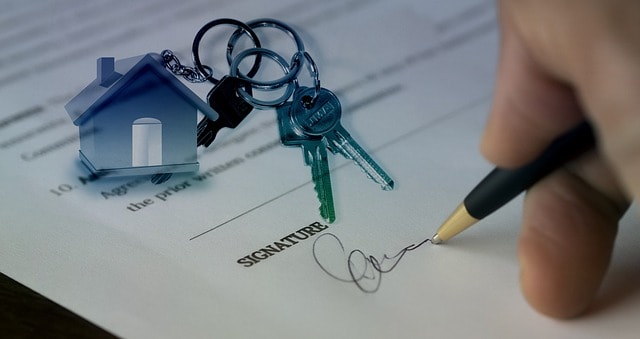If you’re looking to get into the commercial property market, one of the first things you’ll be wondering is how much you’ll need to contribute to the deal by way of a commercial property deposit.
Commercial property is different to residential, so in this guide I’ll go through the various factors that affect deposit requirements, negotiation strategies and what to consider when investing in commercial real estate.

Commercial Property Deposits in Australia
A commercial property deposit is the initial payment required when making a commercial property purchase. Unlike residential properties which often require smaller deposits, commercial property loans require a bigger upfront payment.
Factors that Affect Deposit Requirements
Here are the factors that can impact the deposit required for a commercial property loan in Australia:
Loan-to-Value Ratio (LVR)
Commercial lenders in Australia have lower LVRs than residential loans. While residential properties may have LVRs of 80-90%, commercial property loans are often 65-75% LVR which means you’ll need a 25-35% deposit.
Typical Deposit Ranges:
– Standard Commercial Properties: 20-30% deposit
– High-Risk Properties: 30-40% deposit
– Prime Commercial Real Estate: 15-25% deposit (for well-established businesses)
– First-Time Commercial Buyers: 25-35% deposit
– Investment Properties: 30-40% deposit
Property Value
The value of the commercial property also plays a big role in determining the deposit requirement. For example, we’ve seen scenarios where properties over $1 million may require 30-50% of the property’s purchase price.
Property Type and Size
Different types of commercial properties may have different deposit requirements. For example, a standard office building loan may require a lower deposit than a specialised industrial property loan.
Location and Market Conditions
Prime locations in major Australian cities may require higher deposits as there’s more competition and perceived lower risk.
Borrower’s Financial Health
Lenders will assess the borrower’s financial situation, including credit history and business performance to determine the deposit amount.
Lender Policies
Different lenders in Australia have different risk appetite and policies for commercial property loans which can affect deposit requirements.
Because every situation is different, the best way to find out exactly how much you’ll need as a deposit, and whether you’ll be eligible for the loan, book a call with our business loan brokers today.
Commercial Property Deposit Calculator
Commercial Property Deposit Calculator
Calculate your deposit requirements for commercial property finance
What's Included in Your Deposit Calculation:
- Property deposit based on selected LVR
- State-specific stamp duty - estimates
- Legal and conveyancing fees allowance
- Building inspection and valuation costs
- Loan establishment fees estimate
- 12-month interest buffer (recommended)
Ready to Secure Your Commercial Property Finance?
Speak to our expert commercial property finance brokers
Book your free finance assessment(This calculator is for illustration purposes only and results may be inaccurate. Do not use it to make financial decisions. Contact our team for a tailored assessment and quote.)
Commercial Property Deposit Requirements for each Australian state
(Last checked 17 December 2025)
New South Wales (NSW)
Sydney Metro:
- Interest rate range: 5.80% - 8.10%
- Minimum deposit: 15-30%
- Prime CBD locations: 15-30% (for established businesses)
- Suburban commercial: 25-35%
- Average property prices: $800,000 – $2.5M+
Regional NSW:
- Minimum deposit: 25-30%
- Rural commercial properties: 30-40%
- Industrial properties: 25-35%
Key Considerations for NSW:
- Higher property values in Sydney require larger absolute deposit amounts
- Stamp duty rates vary significantly between Sydney and regional areas
- Many lenders require larger deposits for properties outside major centers
Victoria (VIC)
Melbourne Metro:
- Interest rate range: 5.80% - 8.10%
- Minimum deposit: 15-30%
- CBD and inner Melbourne: 15-30%
- Outer suburban commercial: 25-35%
- Average property prices: $600,000 – $2M+
Regional Victoria:
- Minimum deposit: 25-30%
- Rural and remote areas: 30-40%
- Industrial and warehouse: 25-30%
Key Considerations for Victoria:
- Melbourne’s strong commercial market allows for competitive deposit requirements
- Regional Victoria often requires higher deposits due to perceived risk
- Manufacturing and industrial properties may have specific lender requirements
Queensland (QLD)
Brisbane and Gold Coast:
- Interest Rate Range: 5.80% - 8.20%
- Minimum deposit: 20-30%
- Tourism-related commercial: 30-40%
- Established retail/office: 25-30%
- Average property prices: $500,000 – $1.5M+
Regional Queensland:
- Minimum deposit: 25-35%
- Mining-dependent areas: 30-40
- Agricultural commercial: 30-40%
Key Considerations for Queensland:
- Tourism and hospitality properties often require higher deposits
- Regional areas dependent on single industries face stricter requirements
- Tropical weather considerations may affect insurance and lending terms
Western Australia (WA)
Perth Metro:
- Interest rate range: 6.05% - 8.50%
- Minimum deposit: 20-30%
- Resource sector commercial: 25-35%
- Established suburbs: 20-30%
- Average property prices: $400,000 – $1.2M+
Regional WA:
- Minimum deposit: 30-40%
- Mining towns: 35-45%
- Remote locations: 40-50%
Key Considerations for WA:
- Resource sector volatility affects lending criteria
- Remote properties require significantly higher deposits
- Limited lender appetite for certain regional areas
South Australia (SA)
Adelaide Metro:
- Interest rate range: 6.10% - 8.40%
- Minimum deposit: 20-30%
- Established commercial areas: 20-25%
- Emerging commercial zones: 25-35%
- Average property prices: $350,000 – $900,000+
Regional SA:
- Minimum deposit: 25-35%
- Rural commercial: 30-40%
- Wine industry related: 25-35%
Key Considerations for SA:
- Generally more affordable than eastern states
- Wine industry properties may have seasonal considerations
- Limited commercial property market in some regions
Tasmania (TAS)
Hobart and Launceston:
- Interest rate range: 6.30% - 8.80%
- Minimum deposit: 25-35%
- Tourism commercial: 30-40%
- Traditional retail/office: 25-30%
- Average property prices: $300,000 – $700,000+
Regional Tasmania:
- Minimum deposit: 30-40%
- Remote areas: 35-45%
- Specialty properties: 40-50%
Key Considerations for Tasmania:
- Limited lender options affect deposit requirements
- Tourism properties face seasonal income considerations
- Regional properties often require higher deposits due to limited market
Australian Capital Territory (ACT)
Canberra:
- Interest rate range: 6.00% - 8.20%
- Minimum deposit: 20-30%
- Government sector related: 20-25%
- Private commercial: 25-35%
- Average property prices: $500,000 – $1.5M+
Key Considerations for ACT:
- Stable government employment supports lower deposit requirements
- Limited commercial property supply affects pricing
- Professional services sector dominance influences lending
Northern Territory (NT)
Darwin:
- Interest rate range: 6.70% - 9.00%
- Minimum deposit: 30-40%
- Tourism and hospitality: 35-45%
- Resource sector: 30-40%
- Average property prices: $400,000 – $1M+
Regional NT:
- Minimum deposit: 40-50
- Remote locations: 45-55%
- Specialized properties: 50%+
Key Considerations for NT:
- Highest deposit requirements nationally
- Limited lender appetite due to market volatility
- Cyclone and weather risks increase insurance costs and lending requirements
Commercial Loans vs Residential Loans
It’s important to understand the key differences between commercial and residential property loans in Australia:
Loan type |
Description |
|---|---|
Full Doc Loans |
These require full financial documentation and offer the best rates and terms. |
Low Doc Loans |
For self employed or complex financial situation, these loans may require higher deposits but less documentation. |
Commercial SMSF Loans |
Allow investors to buy commercial property through their self managed super fund, subject to certain rules. |
Development Loans |
For property developers, these loans require higher deposits and staged funding. |
Refinancing Loans |
For property owners to access equity or better loan terms on existing commercial properties. |

Negotiation Strategies
While commercial deposits in Australia are big, try these 5 ways to get the best terms possible:
- Get Your Finances in Order. Present a strong financial profile, good cash flow, low debt, good credit history.
- Offer More Security. Some lenders may accept lower deposits if you offer more security, other property assets or a guarantor loan.
- Choose the Right Property. Go for standard commercial properties in prime locations with strong rental potential, lenders may view these more favourably.
- Use a Commercial Mortgage Broker. Experienced business finance brokers can help you through the complex commercial lending process and get better deposit terms.
- Consider Alternative Lenders. While major banks are strict, private lenders or non-bank lenders may offer more flexible deposit options.
Commercial Property Loans in Australia
Knowing the types of commercial property loans can help you decide:
Loan type |
Description |
|---|---|
Full Doc Loans |
These require full financial documentation and offer the best rates and terms. |
Low Doc Loans |
For self employed or complex financial situation, these loans may require higher deposits but less documentation. |
Commercial SMSF Loans |
Allow investors to buy commercial property through their self managed super fund, subject to certain rules. |
Development Loans |
For property developers, these loans require higher deposits and staged funding. |
Refinancing Loans |
For property owners to access equity or better loan terms on existing commercial properties. |

Things to Consider as a Commercial Property Investor
When making a commercial property deposit in Australia, remember:
- GST: Commercial properties are GST applicable, which can affect the commercial property purchase price and deposit amount.
- Due Diligence: Inspect the property’s condition, tenant quality and growth potential before committing to a deposit.
- Cash Flow Planning: Make sure you have enough funds not only for the deposit but also for ongoing expenses such as maintenance, property management and vacancy periods.
- Tax: Talk to a tax professional to understand the tax implications of your commercial property investment, including deductions and capital gains tax.
- Exit Strategy: Think about your long term plan for the property, including refinancing or sale options, which can affect your initial deposit strategy.
Speak To A Specialist Commercial Broker
Commercial property investment in Australia requires careful planning and understanding of deposit requirements. Commercial property deposits are bigger than residential but reflects the risk and opportunity of this asset class.
By considering LVR, property type, location and your financial situation, you can get the right commercial property loan. Remember to use commercial mortgage brokers, do your due diligence and think through all the financials before you commit to a deposit.
With the right way and knowledge, commercial property can be a good investment, long term growth and stable income in the Australian real estate market.

Commercial Property Loans – FAQs
What is the typical deposit required for a commercial property loan in Australia?
The typical deposit for a commercial property loan in Australia ranges from 25% to 35% of the property’s value. However, this can vary depending on factors such as the property type, location, and the borrower’s financial situation. Some lenders may require deposits of up to 50% for high-value or specialised properties.
Learn more about about the three main factors that influence your deposit requirements:
Commercial property types
Commercial loan types
Commercial property locations
Can I use my residential property as security for a commercial property loan?
Yes, it’s possible to use your residential property as additional security for a commercial property loan in Australia. This strategy, known as cross-collateralisation, may help you secure a lower deposit or more favorable loan terms. However, it’s important to consider the risks carefully, as it puts your residential property at risk if you default on the commercial loan.
Are commercial property loans in Australia more expensive than residential loans?
Generally, yes. Commercial property loans in Australia often have higher interest rates compared to residential loans. This is due to the perceived higher risk associated with commercial properties. Additionally, commercial loans may have more complex fee structures, including higher application fees and ongoing management costs.
Can I get a commercial property loan with bad credit in Australia?
While it’s more challenging, it’s not impossible to secure a commercial property loan with bad credit in Australia. However, you should expect to face stricter requirements, including a larger deposit (potentially 40-50% or more), higher interest rates, and more stringent assessment of your business plan and the property’s potential. Working with a specialised commercial mortgage broker can help you explore options with lenders who are more open to working with borrowers with less-than-perfect credit.

